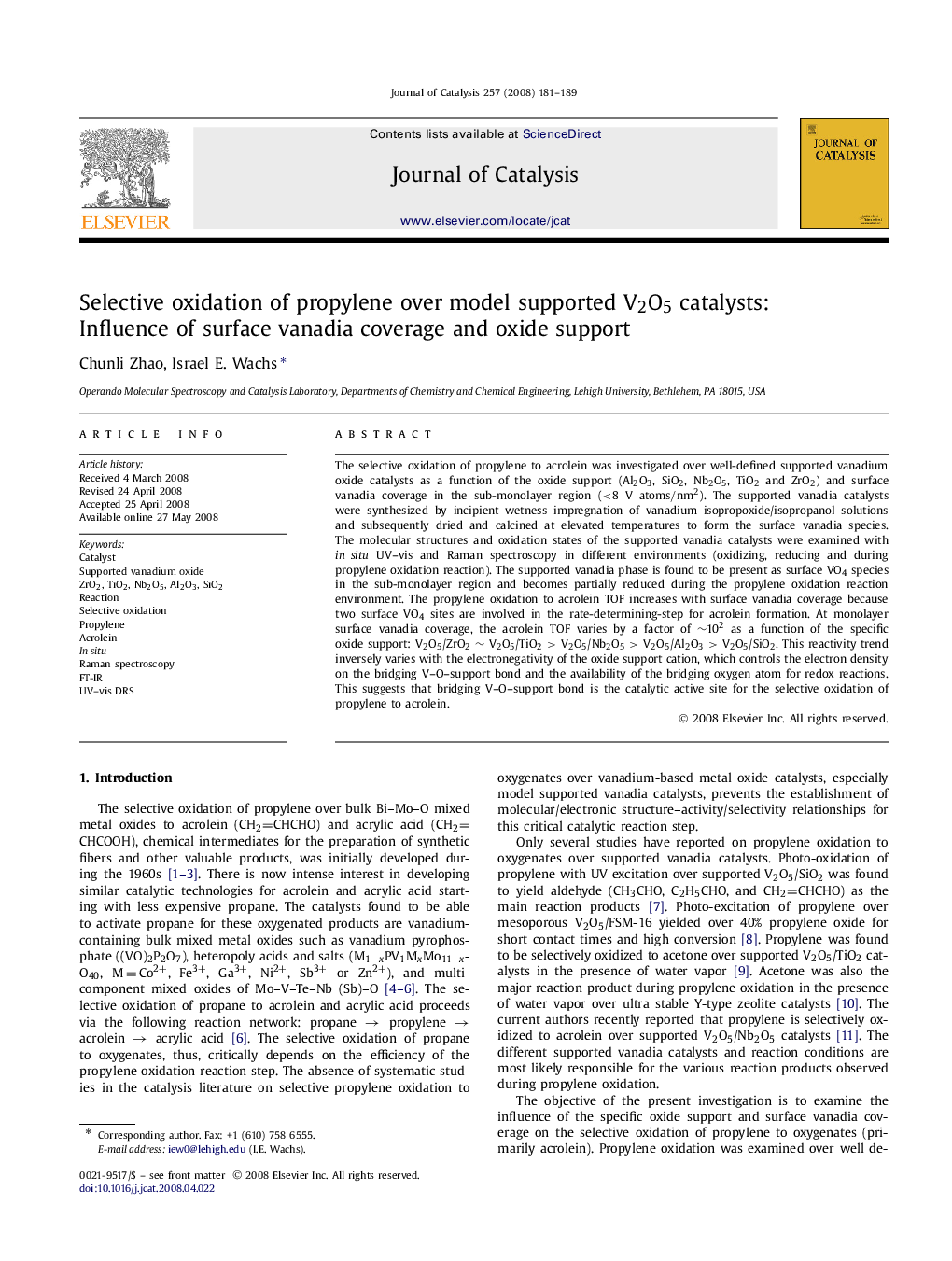| Article ID | Journal | Published Year | Pages | File Type |
|---|---|---|---|---|
| 62434 | Journal of Catalysis | 2008 | 9 Pages |
The selective oxidation of propylene to acrolein was investigated over well-defined supported vanadium oxide catalysts as a function of the oxide support (Al2O3, SiO2, Nb2O5, TiO2 and ZrO2) and surface vanadia coverage in the sub-monolayer region (<8 V atoms/nm2). The supported vanadia catalysts were synthesized by incipient wetness impregnation of vanadium isopropoxide/isopropanol solutions and subsequently dried and calcined at elevated temperatures to form the surface vanadia species. The molecular structures and oxidation states of the supported vanadia catalysts were examined with in situ UV–vis and Raman spectroscopy in different environments (oxidizing, reducing and during propylene oxidation reaction). The supported vanadia phase is found to be present as surface VO4 species in the sub-monolayer region and becomes partially reduced during the propylene oxidation reaction environment. The propylene oxidation to acrolein TOF increases with surface vanadia coverage because two surface VO4 sites are involved in the rate-determining-step for acrolein formation. At monolayer surface vanadia coverage, the acrolein TOF varies by a factor of ∼102 as a function of the specific oxide support: V2O5/ZrO2 ∼ V2O5/TiO2 > V2O5/Nb2O5 > V2O5/Al2O3 > V2O5/SiO2. This reactivity trend inversely varies with the electronegativity of the oxide support cation, which controls the electron density on the bridging VOsupport bond and the availability of the bridging oxygen atom for redox reactions. This suggests that bridging VOsupport bond is the catalytic active site for the selective oxidation of propylene to acrolein.
